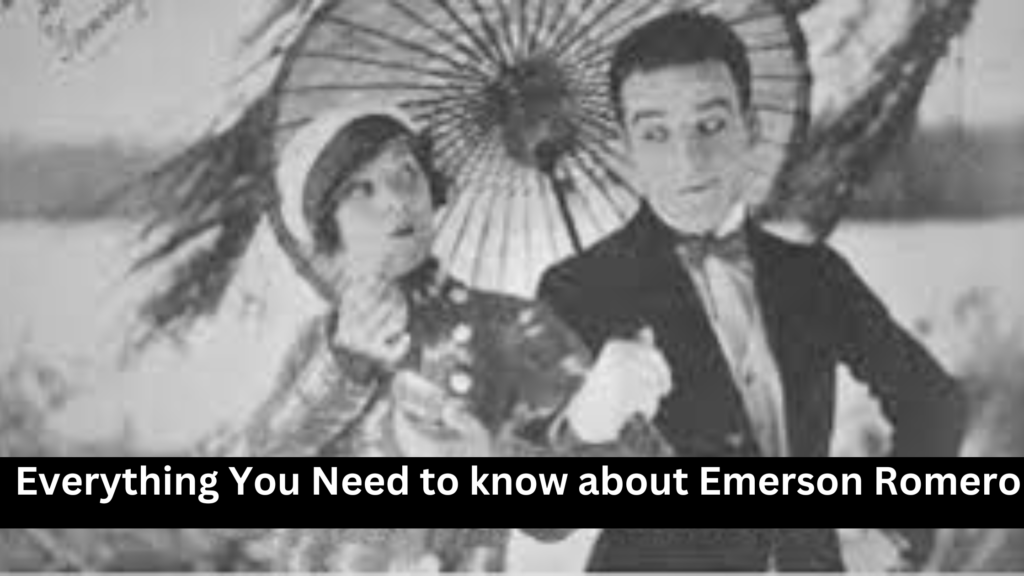
Emerson Irving Romero (August 19, 1900 – October 16, 1972) was a Cuban-American silent film actor, known professionally as Tommy Albert. While he first gained recognition for his performances in silent films, his most significant contribution was in the realm of accessibility for the deaf and hard of hearing.
As the film industry transitioned from silent films to sound films, Romero realized that individuals with hearing impairments faced new challenges in enjoying cinematic storytelling. Determined to find a solution, he pioneered a technique for adding captions to sound films, making them accessible to a broader audience. His innovative approach laid the groundwork for modern film captioning methods and inspired the development of accessibility technologies that continue to benefit viewers today.
Romero’s work not only influenced the film industry but also played a crucial role in advocating for the rights of the deaf and hard-of-hearing communities. His groundbreaking efforts eventually led to the widespread adoption of captioning in movies, television, and other multimedia formats, ensuring greater inclusivity in visual storytelling. His legacy stands as a testament to the power of innovation in bridging communication gaps and fostering equal access to entertainment for all.
Emerson Romero CHildHood Life and Education
Born on August 19, 1900, in Havana, Cuba, Romero was a first cousin to film and television star Cesar Romero. At the age of six, he lost his hearing due to a fever caused by whooping cough. Determined to continue his education, he attended the Wright Oral School in New York City from 1907 to 1915. After completing its program, he spent a year at Stuyvesant High School before transferring to Interlaken High School in Indiana. He later graduated from Blair Academy in New Jersey in 1920.
Emerson Romero pursued higher education, spending one year at Columbia University in New York City before transferring to Lafayette College in Easton, Pennsylvania. However, after two years at Lafayette, financial difficulties forced him to discontinue his studies.
Also Read: Who Is Gorlock The Destroyer? Everything you need to know
Acting career
Following his graduation from Lafayette College, Mr. Romero secured a position at the Federal Reserve Bank of New York. His brother, Dorian, then established the Pan-American Film Corporation in Cuba and encouraged him to pursue acting. This led to Mr. Romero’s starring role in “A Yankee in Havana,” a feature film penned by Dorian. His responsibilities extended beyond acting to include on-location filming, editing, and subtitle creation. Though these Cuban films did not achieve commercial success, his acting prowess garnered the attention of director Richard Harlan, who persuaded him to relocate to Hollywood in 1926.
Between 1926 and 1928, Mr. Romero appeared in over 24 short comedies, including notable titles like “Beachnuts” and “Tillie’s Punctured Romance.” At the behest of his distributors, he adopted the stage name Tommy Albert. He independently managed his makeup and stunt work, collaborating with actors such as W. C. Fields. These films are now presumed lost. The introduction of sound films in 1927 marginalized deaf actors due to the elimination of intertitles. In the fall of 1928, Mr. Romero returned to New York and resumed his employment at the Federal Reserve Bank.
After Career life
Emerson Romero’s commitment to the deaf community in New York City manifested in significant ways. In 1934, he co-founded the Theatre Guild of the Deaf alongside John Funk and Sam Block, a venture that spanned two decades and saw Romero both act and direct. He further contributed through his editorship of “Digest of the Deaf” in 1938 and 1939. During World War II, he transitioned to Republic Aviation, where he played a crucial role in the production of the Republic P-47 Thunderbolt fighter aircraft.
Always striving to enhance the lives of deaf individuals, Emerson Romero pioneered the captioning of films in 1947, splicing film strips to insert captioned images. Though his method resulted in compromised visual and auditory quality, it laid the groundwork for future advancements. His innovative spirit extended to the creation of the Vibralarm in 1959, a vibrating alarm clock, and a product line of sensory aids for the deaf and hard of hearing. Following his retirement from Republic Aviation in 1965, he was honored by the New York City Civic Association of the Deaf in 1970 for his unwavering dedication and service to the deaf community.
FAQs:
What was Emerson Romero’s primary contribution to the deaf community?
His primary contribution was his innovative, though early, work in adding captions to films, allowing deaf individuals to enjoy cinema. He was a pioneer in cinema accessibility.
How did Emerson Romero create his captions?
A: He physically spliced film strips and inserted frames with text between the picture frames. This was a very manual and labor-intensive process.
What challenges did Emerson Romero face?
He faced challenges with the quality of his captions, as his methods could degrade the visual and audio quality of the films. Also, at the time he created his captions, there was not wide spread support for his efforts.
What other contributions did Emerson Romero make?
Beyond captioning, he was active in the deaf community, co-founding the Theatre Guild of the Deaf, and he also invented the Vibralarm, a vibrating alarm clock for the deaf and hard-of-hearing. He also created other accessibility products.
How did the advent of “talkies” affect Emerson Romero’s career?
The introduction of sound films (“talkies”) significantly limited his acting career, as it created a barrier for deaf actors who were not able to hear the audio.
Why is Emerson Romero’s work important today?His pioneering efforts laid the foundation for modern captioning technology, which now benefits millions of people worldwide. He is a key figure in the history of accessible media.
Emerson Romero’s contributions to accessibility in film areComment Writing for Blog truly fascinating. It’s incredible how his work in captioning laid the foundation for what we now take for granted in movies and TV. His legacy is a great reminder of how innovation can create lasting change for inclusivity in entertainment.